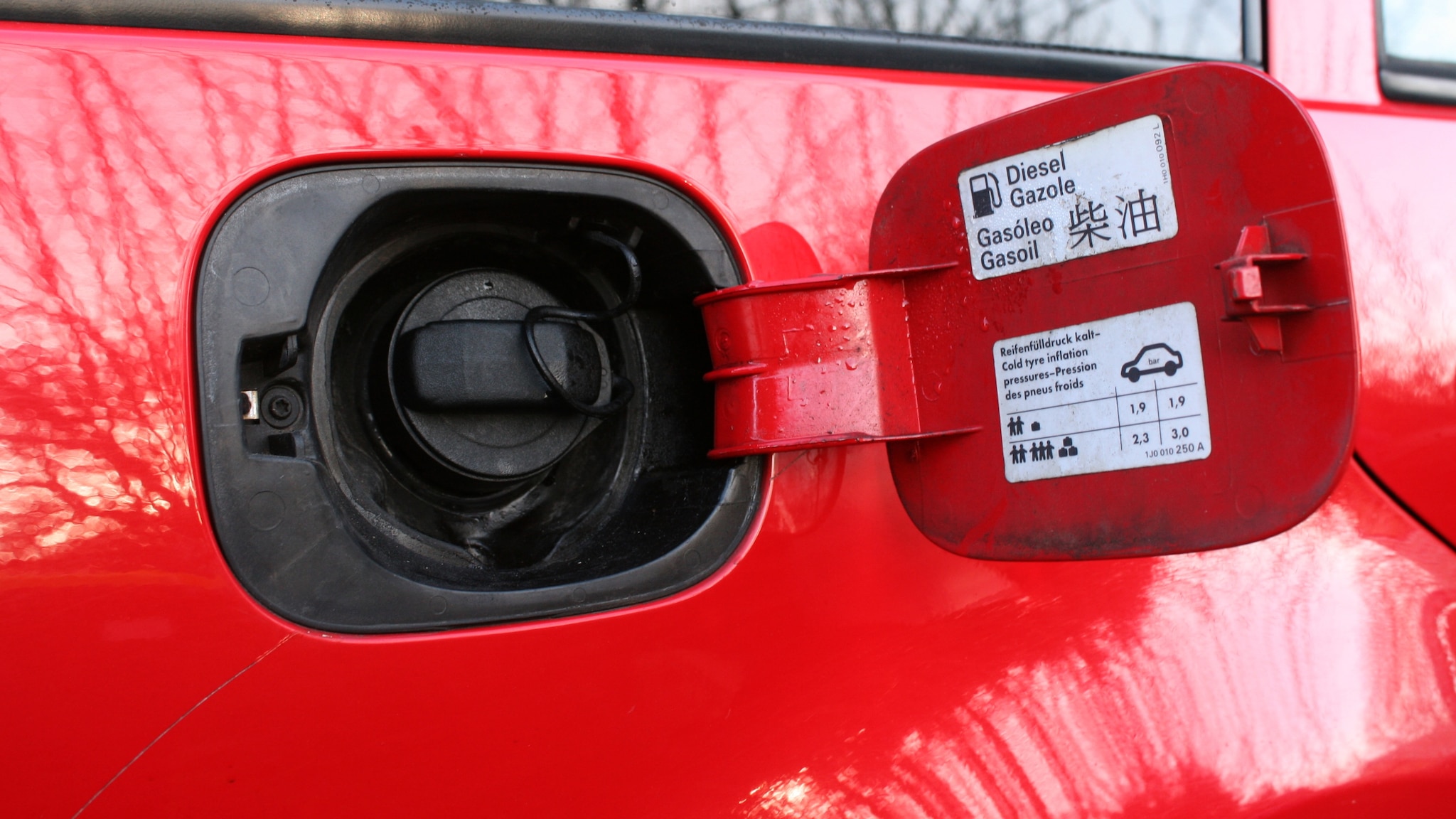Just came across this article in "Autobild", a well reputed German auto magazine:
Verlängert Zweitaktöl im Diesel wirklich die Lebensdauer der Einspritzanlage? Und läuft der Motor dadurch ruhiger? AUTO BILD klärt auf!

www.autobild.de
I have included the unedited google translation hereby.
Not saying this is science but worth a read for those interested.
BLUF: Older diesels can at least benefit from the increased lubricity, while modern diesels only have disadvantages!
I will continue to add 0.4% of 2-stroke oil (equates to 1 Ounce 2-stroke oil per 2 Gal diesel fuel or 18 Ounces for a full 35 Gal refil) to the diesel for my M1009, in particular since diesel fuels here (in the EU) by now have reached a 5-10% ethanol content, which is extremely dry and lacks all/any lubricity.
TRANSLATION:
Mixing of two-stroke oil in diesel - myth or insider tip?
Many drivers of older diesels mix two-stroke oil with the fuel - for a longer service life of the injection system and smoother engine running. But does it really help? And does that also work with modern diesels?
➤ What is two-stroke oil?
➤ Why is older diesel two-stroke oil added?
➤ Can you use two-stroke oil in modern diesel engines?
➤ Conclusion
It used to be a popular trick among taxi drivers, but even today many drivers of older diesels swear by it: mixing two-stroke oil into the fuel. They expect not only smoother engine operation and better combustion, but above all better lubrication of the injection system. Especially in injection systems that are lubricated by the fuel and not by the engine oil, the addition of two-stroke oil should ensure less wear on the diesel pump and the injectors. A similar phenomenon existed for petrol engines up until the 1970s: Here, drivers often poured so-called "top oil" into the tank, which was intended to protect carburettor parts, valves and pistons from wear. While the top oil usually only caused coking, but not any wear protection and has now practically disappeared from the market, many diesel drivers are sticking to the two-stroke oil. But does it really help the diesel? And can two-stroke oil also be used in modern diesels?
What is two-stroke oil?
Before we go into the pros and cons of adding two-stroke oil to diesel, you should first know what two-stroke oil actually is. As the name suggests, two-stroke oil is an engine oil intended for two-stroke engines. Unlike a four-stroke engine, which has its own oil circuit for lubricating all components, a two-stroke engine is lubricated by the fuel. In most cases the fuel is a mixture of (two-stroke) oil and petrol. The oil is then also burned, creating this typical blue cloud that is known, for example, from motor scooters or from some vintage cars such as the Trabant P601.
But two-stroke oil is not just two-stroke oil. There are various ways in which two-stroke oils can be produced. If it is made from base oils obtained by petroleum distillation, it is referred to as a "mineral" two-stroke oil. If synthetic base oils are used in production, this is referred to as a "fully synthetic" two-stroke oil. "Semi-synthetic" two-stroke oils are a mixture of both. In most cases, two-stroke oils are comparable to engine oils - but they contain other additives that, for example, promote the self-mixing of the oil with the fuel.
Why is 2-stroke oil added to older diesels?
Greater lubricity: The main reason old diesel drivers turn to 2-stroke oil is the hope of increasing the lubricity of the diesel fuel and thus reducing wear on the diesel pump or injectors. Because these are often not lubricated by the engine oil, but by the diesel fuel. Two-stroke oil is mainly used because the rumor that modern diesel has poor lubricating properties has persisted for many decades. The cause lies in the development of the fuel, as we get it at the filling stations today: Just over 40 years ago, diesel fuel had a relatively high sulfur content, which came out of the exhaust as sulfur dioxide after combustion. However, sulfur dioxide is a highly toxic gas that causes acid rain, among other things. Nowadays, the sulfur is therefore removed from the diesel fuel during production. This process is called "hydrodesulfonation". In the process, the diesel fuel actually loses some of its lubricity. Hence the rumor that modern diesel fuels have poorer lubricating properties.
Better combustion, quieter engine running
However, the quality of diesel fuel – including its lubricity – is standardized, at least in Europe. The DIN standard EN 590 describes all the basic requirements that diesel fuel has to meet in Europe in order to be approved. In order to meet the required minimum level of lubricity, additives are added to the diesel fuel after hydrodesulphonation, which increase the lubricity again. In most cases, the diesel fuel that you can buy at the gas station even exceeds the specified minimum lubricity limits. Nevertheless, two-stroke oil has the effect of increasing the lubricity of diesel somewhat, because the lubricity of two-stroke oil itself is significantly higher than that of diesel fuel. Many people also explain the smoother engine running that occurs when you pour some two-stroke oil into the tank - but experts have different opinions.
Better combustion: Many diesel drivers also put some two-stroke oil in the tank because they hope for more efficient combustion of the fuel, more power and lower consumption. The ignitability of the diesel, which is specified in the so-called "cetane value", is important for this. The higher the cetane value, the better the diesel-air mixture ignites in the combustion chamber. However, two-stroke oil lowers the cetane value. Depending on the mixing ratio, this can even lead to a noticeable loss of performance.
Quieter engine running: Some experts suspect that this is a possible reason for the quieter engine running. If the cetane value drops, the diesel also ignites more slowly. This can then lead to a gentler ignition of the fuel-air mixture, and the knocking of the diesel engine can be quieter. Other opinions, however, are that adding two-stroke oil leads to an ignition delay - the diesel is therefore ignited later than it should. That would lead to a noticeable loss of performance, but also to louder knocking of the diesel. For this, however, significantly more two-stroke oil would have to be filled in than the ratio of 1:200 that most diesel drivers use. You will not achieve lower consumption by adding two-stroke oil.
Can you use two-stroke oil in modern diesel engines?
The common rail injection systems of modern diesel engines are very delicate and therefore very sensitive. Even tiny dirt particles can lead to damage that makes it necessary to completely replace the injection system. Repair costs of several thousand euros are then the rule rather than the exception. For example, filling in two-stroke oils can result in dirt falling into the tank, which can then result in expensive damage. But the two-stroke oil itself can also damage the diesel pump and the injectors, even if there is only a small amount in the fuel. It actually makes the fuel more lubricious, but at the same time increases its viscosity, making the diesel more viscous. This can become a problem: If the lubricating film breaks off for just a few milliseconds, the common rail system, which operates at a pressure of up to 2000 bar, can already be seriously damaged and then has to be replaced.
Two-stroke oil contains metals such as zinc
However, the residues that form when two-stroke oils are burned are particularly dangerous for modern diesel engines. Because two-stroke oil is a type of motor oil, it leaves different residues when it burns than diesel fuel. Two-stroke oil contains metals such as zinc, whose combustion residues can accumulate on the injector. The residues usually form a strong bond with the injectors due to the high temperatures in the combustion chamber and can no longer be detached so easily. The more residue builds up, the worse the injectors perform and eventually need to be replaced. This happens much less frequently in older diesel engines without common rail injection. This can be due to the different design or the lower injection pressures with which the injectors work.
Combustion residues that attack the particle filter
However, adding two-stroke oil to the fuel is not only bad for vehicles with common rail injection, but also for vehicles with diesel particle filters. Although there are two-stroke oils that do not attack the precious metals in the catalytic converter, this does not automatically mean that they will not damage the diesel particulate filter. Again, it is the combustion residues that can attack the particle filter and make it unusable. Even more harmful, however, is the ash that is produced during the combustion of two-stroke oil in addition to the soot particles from diesel combustion and clogs the particle filter over time. Then the only thing left to do is to replace or clean the particle filter – which is also expensive.
Conclusion on the use of two-stroke oils
The blending of two-stroke oils into diesel fuel is a sensitive issue that has not really been researched. Even diesel technicians and fuel experts do not always agree on this. Nevertheless, one can come to the conclusion that older diesels can at least benefit from the increased lubricity, while modern diesels only have disadvantages. However, the myth that two-stroke oil makes adulterated and contaminated diesel more usable is not correct. While the oil may add some lubricity, it doesn't make it easier to ignite. There are two things drivers of modern diesels can do to ensure their fuel injection system has a long service life: Regularly drain the fuel filter or replace it if necessary.

 Adding two-stroke oil for lubricity
Adding two-stroke oil for lubricity



